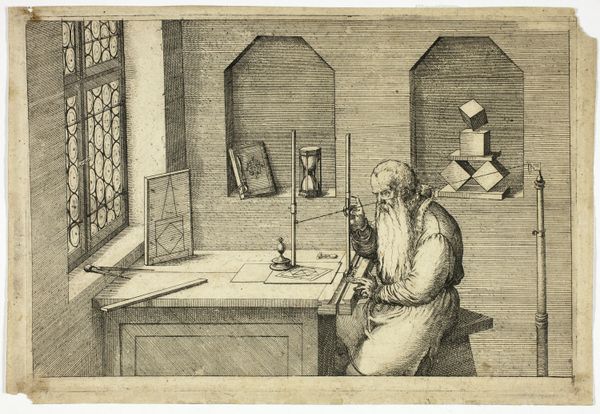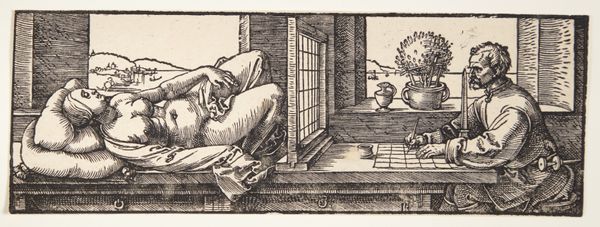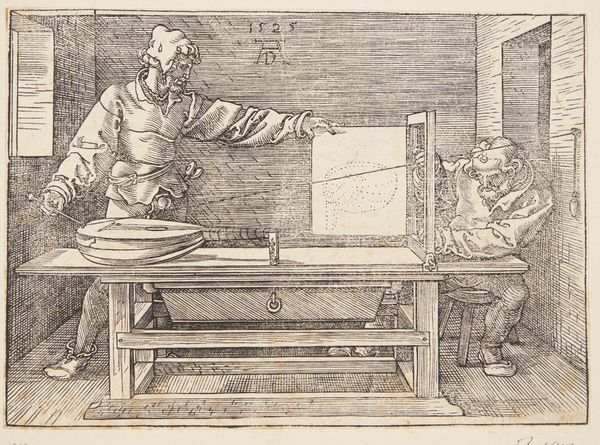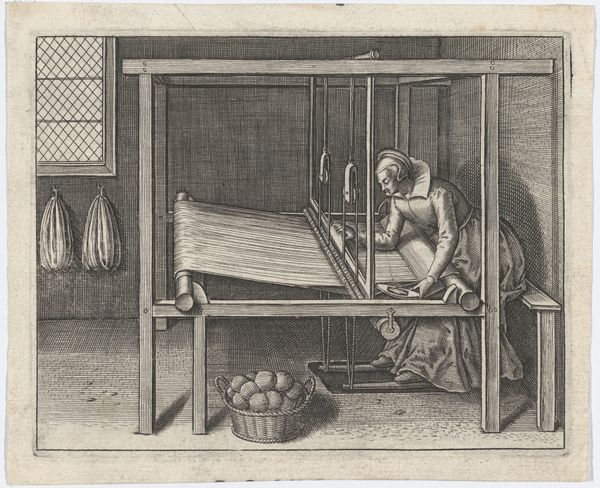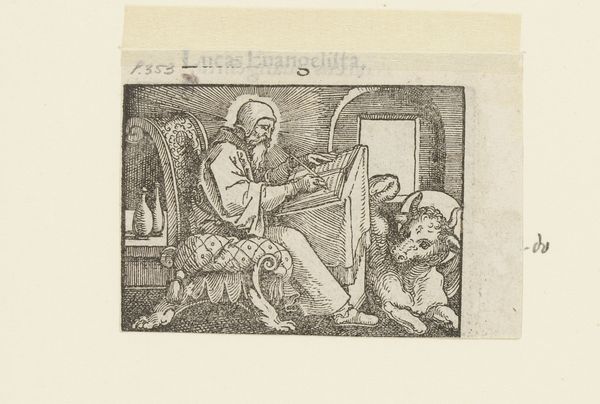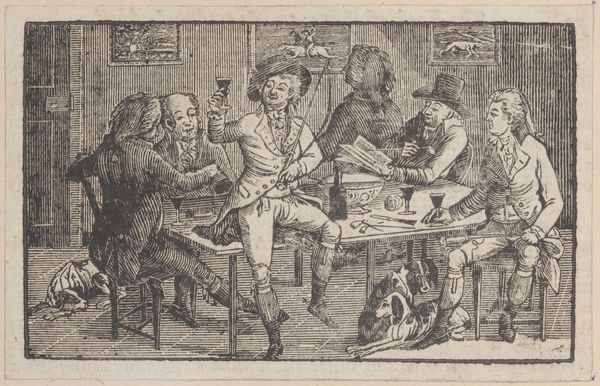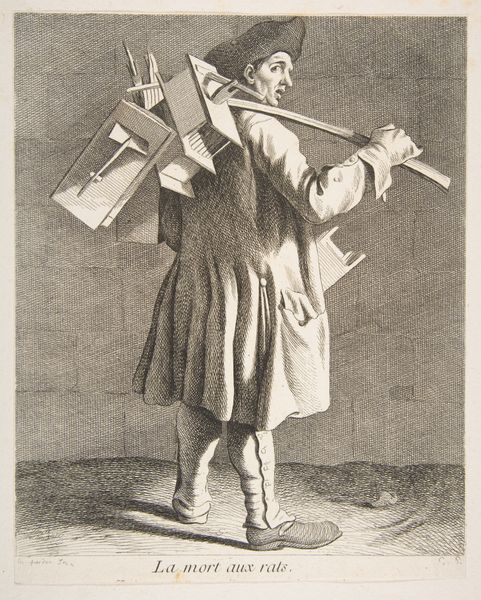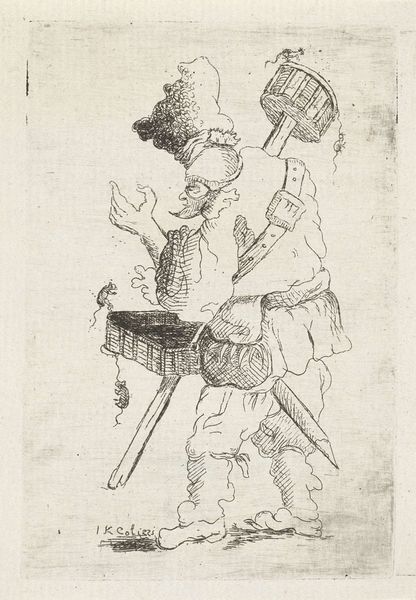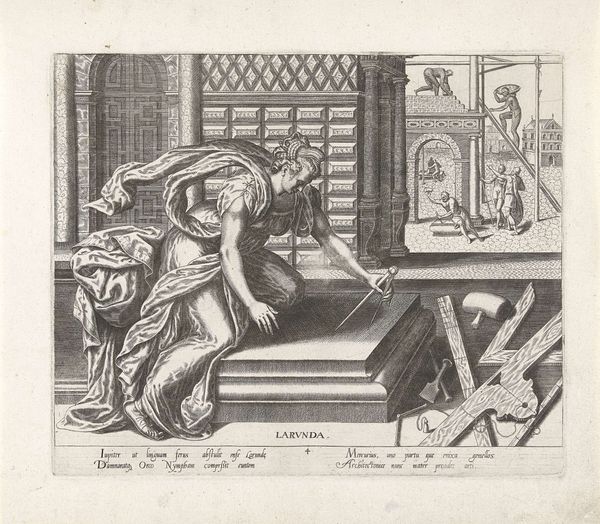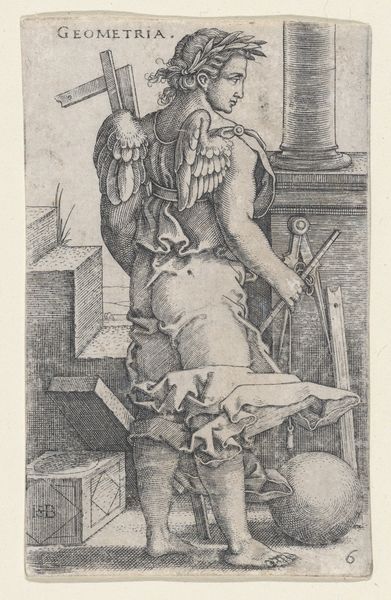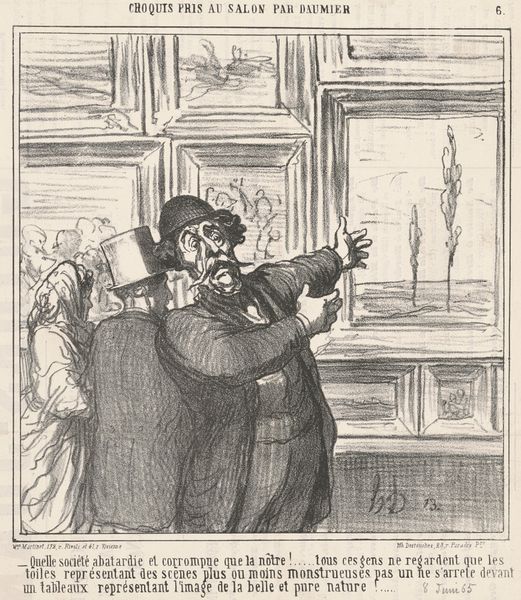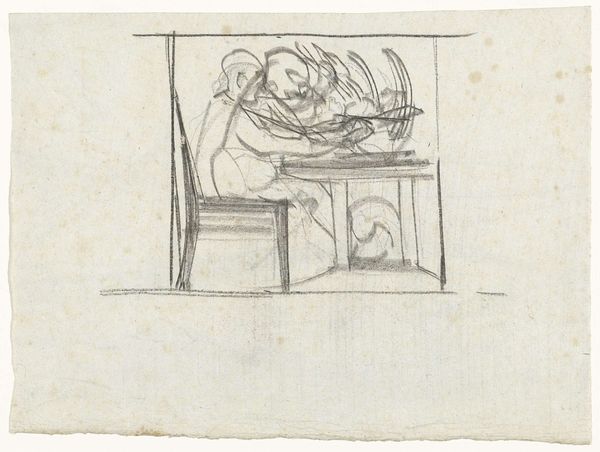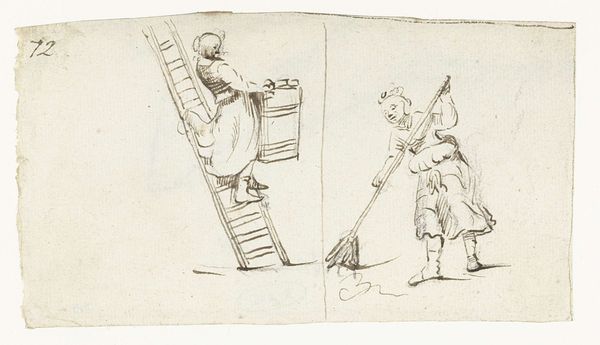
drawing, print, ink, woodcut
#
portrait
#
drawing
#
ink drawing
#
pen drawing
# print
#
perspective
#
11_renaissance
#
ink
#
woodcut
#
northern-renaissance
Dimensions: 82 mm (height) x 217 mm (width) (bladmaal)
Editor: Today we're looking at Albrecht Dürer's "Draftsman drawing a vase", made between 1500 and 1524. It's an ink drawing that feels quite methodical, almost scientific in its approach. What strikes you most about the composition, and what principles guide your reading of the work? Curator: The rigorous deployment of line is the most striking visual element. Consider the stark contrast between the dense cross-hatching creating shadow and the clean, precise lines defining form. Note how this contrast serves not only to delineate space but also to foreground the very act of representation itself. Editor: Representation? Curator: Precisely. Dürer doesn’t simply depict a scene; he dissects the process of its visual construction. The grid, the tools, and the figure all become part of a complex semiotic system. The image thus becomes a commentary on the relationship between perception, knowledge, and artistic skill. Editor: It's interesting to consider the grid as a commentary. I see it as a practical tool for translating three dimensions onto a two-dimensional surface. Curator: Indeed, it serves that function, but its presence also invites us to reflect on the underlying structures that inform our understanding of visual reality. Does the mechanical reproduction of an object rob it of it's beauty or is something else gained in translation? Look how line quality differentiates figure and still life and how the figure directs all sight-lines. Editor: Seeing your analysis I can see the image transforms from merely representational to deeply conceptual. Curator: Indeed! Considering the systematic formalism of Dürer can change how one approaches art.
Comments
No comments
Be the first to comment and join the conversation on the ultimate creative platform.
